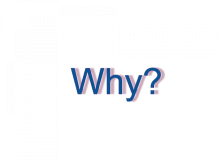Karen A Reiman-Sendi
Posts tagged with Assessment in Blog Tiny Studies
Showing 31 - 40 of 71 items

Institutional data, collected by campus units to assist with decision making and organizational direction, can inform scope and provide context to library assessment and research projects.

Between March 20 and August 31, 2020, the University of Michigan Press made all the titles in the Library-hosted ebook collection, UMP EBC, free-to-read. During this period, U-M Press staff gathered use data in the hope of assessing the impact of free-to-read content while informing the future business strategy. Three different assessment efforts are described in this post.

Source evaluation is an important skill in our information landscape, which is why librarians teach this concept to students during course-integrated information literacy sessions. As part of an IMLS grant, our research team is conducting a two part study to understand the impact of library instruction on students’ evaluation of sources. In this post, we discuss the use of a questionnaire and role-playing interviews to learn more about students’ confidence in their evaluation abilities.

U-M Library’s Library Search launched in 2018 as a unified search engine application containing five previously distinct interfaces: Catalog, Articles, Databases, Online Journals, and Library Websites. Library Search was a big change for users, and an increase in user support requests suggested that further exploration was needed to pinpoint user pain points. The authors began an exploratory study that helped understand users’ experiences and identified areas for continued work.

How does one get valid data without traumatizing or alienating students and faculty in a trying time? According to this author, by taking an empathetic approach to planning and implementing an assessment project, you can minimize negative impacts to your community.

This blog post presents how the use of multiple streams of data benefited two recent U-M Library studies. For example, one recent study merged survey data, U-M human resources data, and Library document delivery data to provide a very rich picture of how diverse groups on campus use and experience the Library’s document delivery service. Some advantages of joining multiple data sources in assessment projects are discussed in the context of the two example studies.

In three blog posts, the authors describe a multi-year library service design project. This last post describes the team’s prototyping and testing processes, and our resulting interactive exercise.

In three blog posts, the authors describe a multi-year library service design project. This second post describes the research process used to develop our user experience tool.

In three blog posts, the authors describe a multi-year library service design project. This first post describes the origins and goals of the assessment project.
